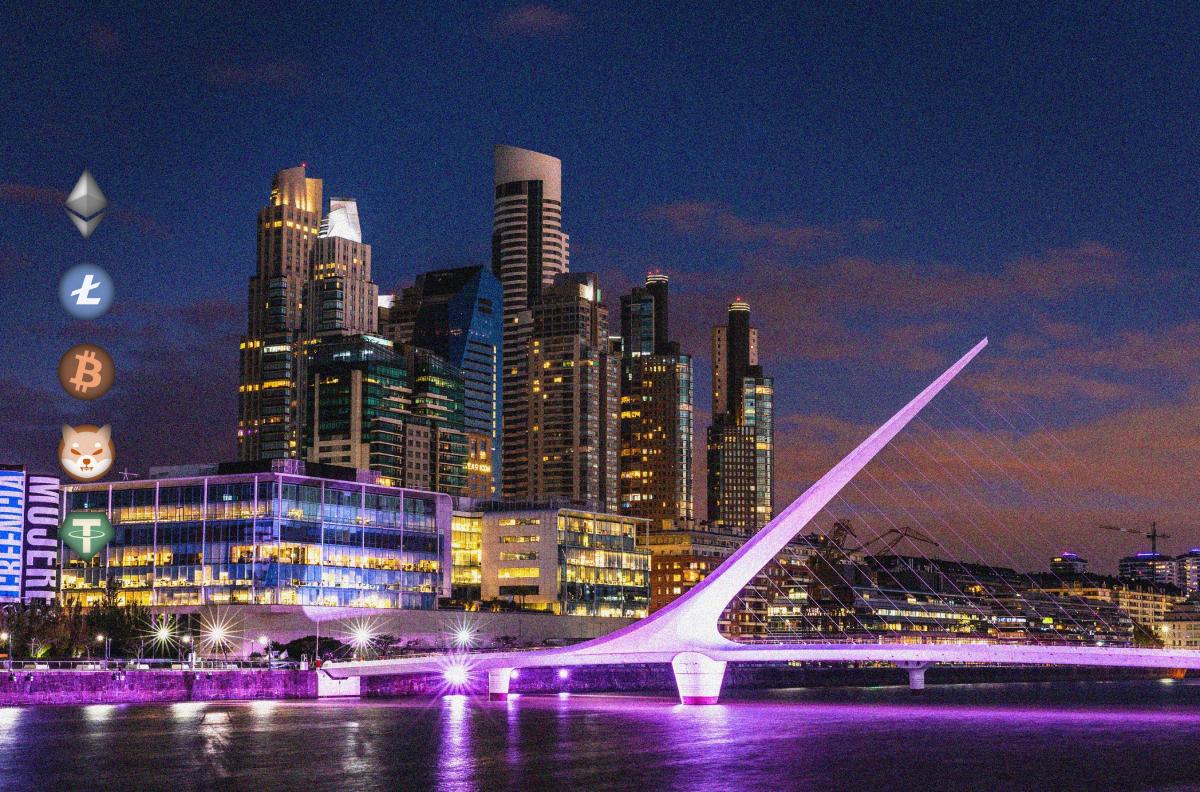
Amid the crypto boom in Latin America, Argentina emerged as a leading country in adoption. However, it’s important to understand one thing: Argentina’s current economic problems were dormant until 2018 when they started to affect daily life. For context, at the end of 2015, one US dollar was equivalent to 9.85 Argentine pesos. By December 2019, that rate had surged to 62.99 pesos per dollar. What seemed like a major issue back then was just the beginning of a much larger problem. In November 2023, Argentina’s monthly inflation rate hit 12.8%, which annualizes to 324.34%… a complete catastrophe.
The world’s 8th biggest country has always been impressive. By the late 19th century, Argentina had become one of the wealthiest territories on the planet, rivaling nations like the United States, New Zealand, Australia, Switzerland, and Belgium. However, political corruption eventually stalled this growth. The 1970s and 1980s were terrifying, as Argentines had to adapt to a constantly devaluing currency. The lowest point came in May 1989, when hyperinflation reached 764%.
Historically, Argentines have shown remarkable endurance. However, they have long faced a persistent issue: decades of zero confidence in their national currency. While today it might seem to young Latinos that Venezuela invented inflation or some similar fantasy, the truth is that Argentina has long been among the most economically undisciplined nations in the world. Argentines have grown accustomed to saving in dollars, so whenever a crisis erupts, they know exactly where to turn. It’s estimated that outside the local financial system, Argentines hold more than $277 billion in savings.
The country that gave birth to intellectuals like Domingo Faustino Sarmiento and Jorge Luis Borges now faces the grip of a “new economic and fiscal crisis”. In response, Argentina has expanded its horizons to embrace the coexistence of crypto alongside the US dollar, so it’s time to delve into some interesting developments. Recently, Tierra del Fuego – Argentina’s least populated province – has emerged as one of the main locations for crypto transactions within the country, a revelation brought to light through a local exchange named Lemon. This region hosts some of South America’s largest crypto-mining projects, attracted by its frigid climate and significant tax advantages.
This February, Lemon’s “State of the Crypto Industry 2023” report highlighted Argentina as a leader in crypto adoption in South America. The publication revealed that between June 2022 and July 2023, Argentina surpassed Brazil in crypto transaction volume, totaling USD 85.4 billion. It also noted that “more than 40 million people in Latin America own cryptocurrencies”, with Argentina leading in adoption per capita: *”4 out of every 10 active crypto app users in the region are in Argentina”*.
“In Argentina, there are over 10 million active crypto accounts, as reported by the National Securities Commission (CNV), matching those in the traditional capital market, including mutual funds and client subaccounts. These numbers reflect widespread distrust in the traditional financial system.
Interestingly, despite challenges with the Argentine peso, the country’s high internet accessibility (over 92% of households as of the third quarter of 2023, according to the INDEC report) has given us a competitive edge in adopting one of history’s most significant technologies.
While it’s important not to focus solely on the current economic crisis, this distrust has uniquely predisposed the Argentine population to embrace new methods of saving, investing, and managing their finances”.
You might find it interesting: Kaiko’s Report: Latin American Users Prefer Stablecoins Over Bitcoin.
Argentines no longer seek refuge solely in the dollar but also in crypto assets. In late 2023, Chainalysis released its widely recognized Global Cryptocurrency Adoption Index, ranking Argentina 15th worldwide. Among Latin American nations, it trailed only Brazil (9th place). The country’s standout feature was its high rating for “value received from centralized retail services”.
“Lower middle income nations are often countries on the rise, with dynamic, growing industries and populations. Many of them have undergone significant economic development in the last few decades to rise from the low income group. And perhaps most importantly of all, 40% of the world’s population live in LMI countries — more than any other income category. If LMI countries are the future, then the data indicates that crypto is going to be a big part of that future”.

On the other hand, how does the current Argentine government view the crypto sector? President Javier Milei has always been vocal about his support for Bitcoin and cryptocurrencies, even before taking office. Recently, he used his X account to announce that his stabilization plan includes allowing “free currency competition” in Argentina, with no issue if citizens choose to accept BTC or other digital assets in their businesses. However, a few months ago, Milei had to withdraw the crypto incentives he had introduced in a bill meant to kickstart his administration. With a minority in both parliamentary chambers, he often needs to compromise on some initiatives to gain the support of cooperative blocs and pass reforms.
Despite initial setbacks, the president persisted and reintroduced provisions on cryptocurrencies in a revised version of the “Ley Bases”. After extensive debates and numerous revisions, the legislation ultimately received approval in both the lower house and the senate. Once the regulations take effect, digital assets and similar holdings can be regularized, although declaring cryptocurrencies held abroad will not be allowed.
However, there is ambiguity regarding the classification of cryptocurrencies held in self-custody wallets as domestic or foreign, requiring clarification from the government. Individuals declaring crypto holdings below 100 million Argentine pesos will be exempt from personal property taxes, while those exceeding this amount will have to pay tax rates ranging from 0.5% to 1.5%.
Subscribe to the Purse.io Newsletter for weekly content on Blockchain and cryptocurrencies, as well as the latest industry news. Follow us on social media for updates on crypto events and the latest from Hamza.biz, the first Web3 Marketplace powered by the Loadpipe protocol and LOAD token. Our goal is to elevate e-commerce with low gas fees and trading freedom. Click here to check out our roadmap for Hamza.